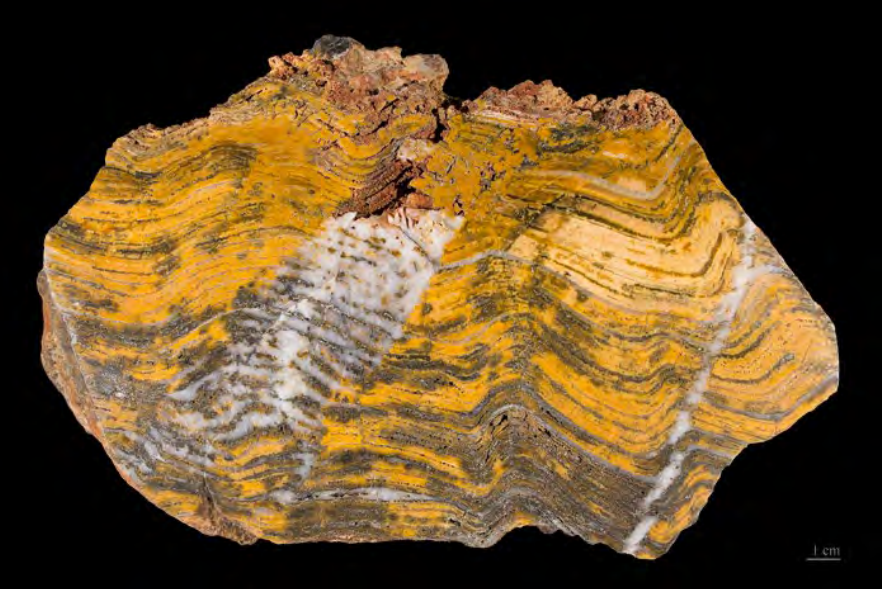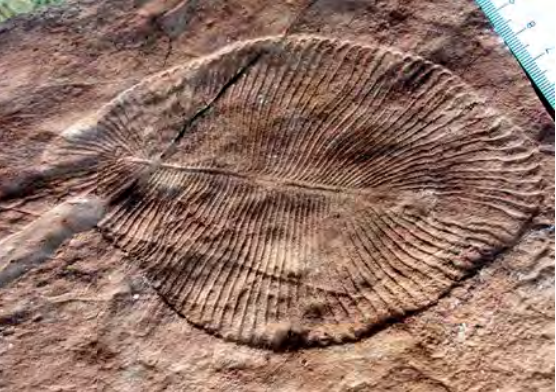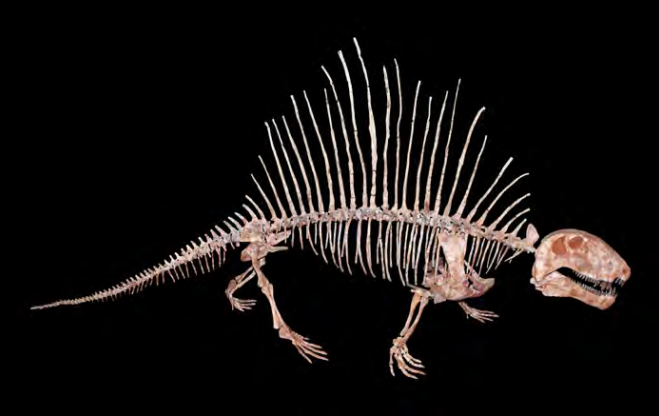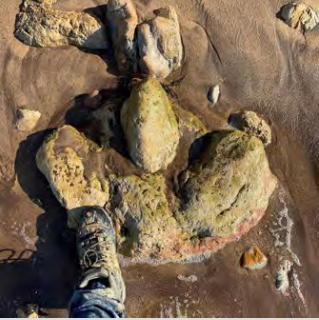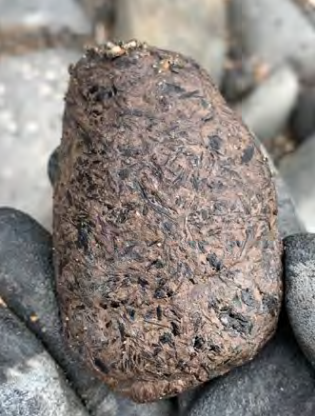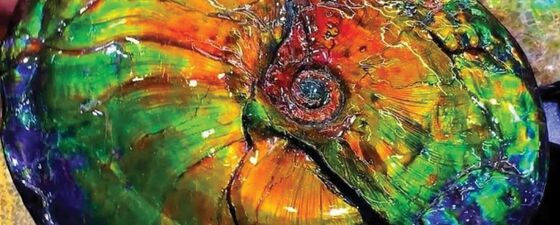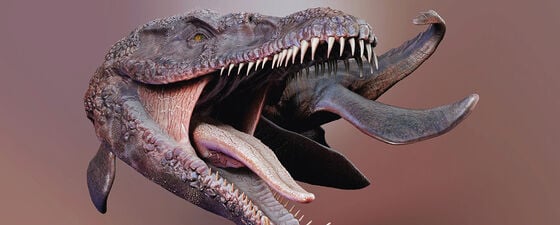Somewhere buried in my garage is a piece of Precambrian Bonahaven Dolomite from the Dalradian succession on the Isle of Islay. Collected on the beach below the Bunnahabhain whisky distillery, it contains probably the oldest fossils I have in my personal collection – some biogenic algal mounds called stromatolites. As stromatolites go, these examples are young – the oldest known are from the Strelley Pool Chert on the Pilbara Craton in Australia and at 3.4 billion years old they are widely regarded as the oldest fossils on Earth (Figure 1). Recently published research on slightly older putative microbial fossils undertaken at UCLA and the University of Wisconsin–Madison utilised secondary ion mass spectrometry (SIMS) to examine the carbon isotopic signature of these organic-looking remains. Their results suggest a biogenic origin, pushing the fossil record back to ~3.5 billion years.
In fact, life may have emerged some 400 million years before this. The latest work from the Universities of Bristol and Bath leveraging molecular clock theory, now estimate the age of LUCA (the Last Universal Common Ancestor) for life on Earth at 3.9 billion years. Molecular clock theory essentially uses the mutation rate of DNA and protein sequences (calibrated from the fossil record) to derive ages of divergence between fossil groups with common ancestors.
The Great Oxygenation Event
If LUCA first appeared around 3.9 billion years ago, it took nearly another 1.5 billion years before prokaryotic organisms (cyanobacteria) evolved and proliferated enough to drive early oxygenation of the Earth’s atmosphere, starting at or around 2.4 billion years. Oxygen production as a by-product of cyanobacteria photosynthesis started to convert the early reducing atmosphere to an oxidising one, paving the way for the (future) evolution of aerobic multicellular organisms.
Rapid Diversification of Life
Some 1.8 billion years later, and approximately 34 million years before the so-called ‘Cambrian Explosion’ (~541 Ma), complex (largely soft-bodied) multicellular life exploded. The Ediacara biota emerged towards the latter part of the Ediacaran period around 575 Ma and radiated, with thousands of specimens known from at least 40 localities worldwide including several particularly important sites in Canada, Russia, Namibia and Australia. The biota includes a broad variety of forms, with some complexity (e.g., Dickinsonia, Figure 2). While hard-shelled organisms in the Cambrian were probably preceded by soft-bodied forms, with very few exceptions, the Ediacara biota appears to have become extinct at the Precambrian–Cambrian boundary, including the first metazoan fauna with calcified skeletal material (e.g., Cloudina and Namacalathus).
Practically all extant animal phyla emerged in the Cambrian including arthropods, typified by trilobites, including some important zone fossils (e.g., Bergeroniellus asiaticus) and chordates (which includes the subphylum Vertebrata to which all organisms with backbones (including us) belong). Some remarkable Lagerstätte are known, including the world-famous Burgess Shale. After many years of toil, mapping the Lower Palaeozoic of Wales and struggling to find a robust fauna to defend the establishment of the Cambrian period, Adam Sedgwick would be absolutely astonished by the tens of thousands of specimens Charles Wolcott amassed from the Burgess Shale, and the many millions of trilobites, brachiopods and other fossils collected from Cambrian stratigraphy worldwide over the last 150 years.
Reading the Writing in the Rocks
One fossil group that emerged in the Middle Cambrian and persisted into the Carboniferous was the graptolites. Graptolites are important zone fossils, and while they may appear to many as just scratches in the rock, they are actually incredibly varied complex colonial organisms that comprised an important part of the Early Palaeozoic zooplankton.
From my home office in Oxfordshire, I can just about see the village of Culham across the River Thames where Charles Lapworth trained as a teacher at the Diocesan Training College (now the European School). Born in Faringdon (famed for its highly fossiliferous Cretaceous Sponge Bed Gravels), Lapworth moved to Scotland to teach, and spent his spare time doing geology. He spent many years painstakingly documenting the graptolite fauna at a locality called Dob’s Linn, now recognised as the global stratotype section and point (GSSP) for the Ordovician–Silurian boundary. His work was revolutionary, providing the framework to establish the Ordovician period, defining the boundary with the Silurian, and resolving some fierce debate about where the divide between the Cambrian and Silurian should be placed; a source of much animosity between Sedgwick and Murchison in the mid-1800s.
Greening of the Earth
All jokes aside about the evolution of land plants, the emergence of vascular plants completely changed everything – imagine the difference the ‘greening’ of Earth had! The first true soils started to develop and plants with roots significantly modified the behaviour of surface drainage. Some research indicates that the resulting improvements to bank stability led to more established streams and rivers, which in turn created the habitat required for larger plants such as tree ferns to thrive… cue the great Devonian and Carboniferous forests (Figure 3), and the development of the economically important coal measures.
The Rise of Dinosaurs and the Evolution of Birds
After Siberian Trap volcanism wreaked ecological havoc and Permian mass extinction, one of the most successful (and perhaps famous) fossil groups of terrestrial animals emerged – the dinosaurs. Before this, therapsids (stem mammals) had been the dominant terrestrial vertebrates having evolved from sphenacodonts (synapsids) in the Permian. Some sphenacodonts such as Dimetrodon incisivum (Figure 4) have often been incorrectly referred to as dinosaurs, even though Dimetrodon actually became extinct some 40 million years before dinosaurs appeared on the scene.
Meanwhile, in the Jurassic seas, the iconic cosmopolitan fauna of ichthyosaurs and plesiosaurs (made famous by the exploits of Mary Anning in the early 1800s) dominated. These large marine reptiles are often mistakenly referred to as dinosaurs, but they are not related. They fed on belemnites, fish and other marine organisms, as evidenced by exceptional fossils with preserved stomach contents, and their fossilised faeces known as coprolites which often contain fish scales and bones, and the hooklets from belemnites (e.g., Figure 6). Ammonites were abundant and incredibly diverse, evolving rapidly and making them ideal zone fossils in both boreal and tethyan realms, each with its unique index taxa (Figure 7).
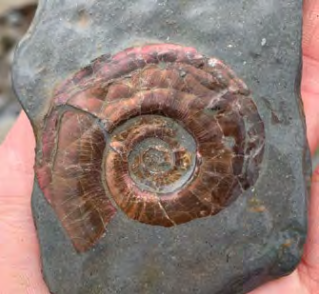
Competing for space throughout this time, the first true mammals emerged at least as early as the Jurassic if not the Late Triassic (there are discrepancies depending on which qualifying characteristics and cladistic model you choose to follow). Early mammals were mostly diminutive and nocturnal, but flourished, especially in the Tertiary (once their dinosaur competitors had demised) and are of course today one of the most successful and diverse therapsid lineages in modern ecosystems.
The evolution of modern mammals is much better understood; for example, the well-documented emergence and radiation of hominids out of Africa. Australopithicine skeletal remains dating back at least 3.2 million years give us clues to our ancestral lineage, with perhaps the most famous hominid fossil ‘Lucy’ (Figure 8). Unlike LUCA, Lucy is not an acronym, but the colloquial name given to specimen Al 288-1 after the Beatles song ‘Lucy in the Sky with Diamonds’ was played at the excavation site.
A couple of million years after Lucy’s death, in the Middle Pleistocene, her descendants (Neanderthals and Denisovans that emerged after Homo erectus) had made it at least as far north as southern Siberia, as demonstrated by a much lesser-known fossil called ‘Denny’ who had a Neanderthal mother and Denisovan father. It is possible that these hominins or their relatives were actively hunting woolly mammoth out on the Russian steppe, especially as mammoth remains were also found at the site. Today Homo sapiens mine the mammoth ivory from the permafrost in Yakutia, Siberia, but the international trade (while legal) has taken a hard hit over the last few years, negatively impacted by a major clampdown on elephant ivory trade in China and tighter controls on Russian exports that protects tusks and other fossils considered to have scientific and cultural value. Some spectacular mammoth remains preserved in the Arctic permafrost are now being used by bioscience and genetic engineering companies to try and resurrect the mammoth (so-called ‘de-extinction’). Advanced genome engineering technologies like CRISPR-CAS9 are making some of these attempts scientifically viable. Not quite dinosaurs, but definitely a bit ‘Jurassic Park’!
Flowers
The earliest angiosperm fossils date from the Lower Cretaceous with pollen in the Valanginian and macrofossils recorded from at least the Aptian onwards. As with other fossil groups, it is hypothesised that they may have appeared earlier than the direct fossil record currently captures based on their sheer diversity, and older fossils may yet be discovered. It has been posited that the evolution of flowering plants had major ecological ramifications – herbivorous dinosaurs failed to evolve a mechanism to avoid eating poisonous plants, driving disruption and collapse of the food chain which contributed to the demise of both herbivorous and carnivorous dinosaurs. Environmental change driven by the Deccan traps and the Chicxulub asteroid impact did the rest!


